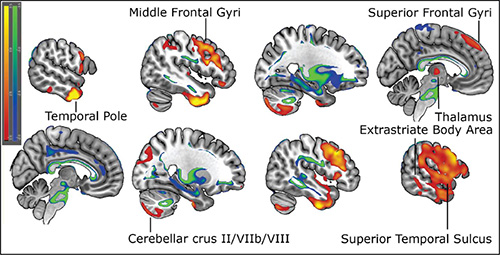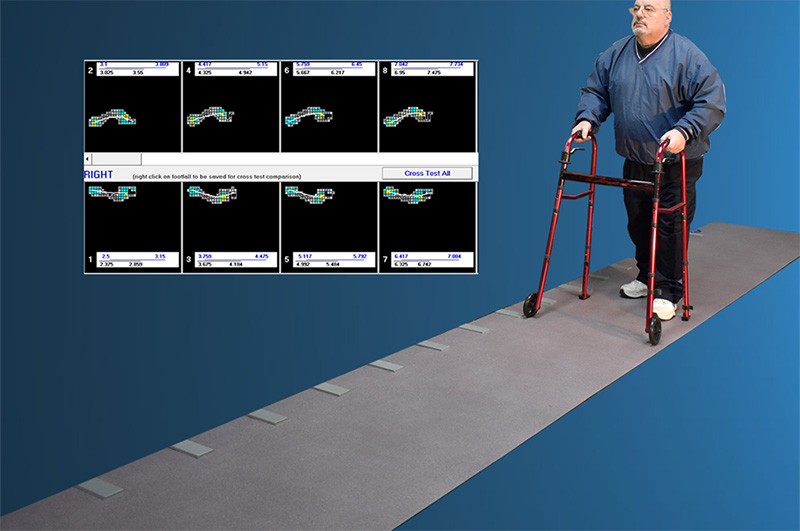Susmit Tripathi, MD, Chief Resident in the Department of Neurology at NewYork-Presbyterian/
Dr. Susmit Tripathi
“Gait disturbances affect roughly 35% of community-dwelling older adults (adults over 65 living outside of nursing homes), and is associated with a higher risk for falls, hospitalization, dementia, and mortality,” says Dr. Tripathi. “Gait is a complex activity; it is controlled by multiple areas and pathways in the brain, as we have seen in studies showing associations between gait dysfunction and atrophy of specific areas of the brain as well as atrophy of the whole brain. However, looking at the individual aspects of gait, such as gait speed and stride length, and associating it with specific structures in the brain can only tell us so much. Similarly, looking for atrophy in a specific brain structure may cause us to miss the forest for the trees. To get to the root of gait dysfunction as a whole, we used a macroscopic approach to the intricate brain patterns of gait.”
The results highlight the complexity of gait and identify previously unrecognized areas of the brain that contribute to gait. “To our knowledge, this is the first study looking at the broad network of changes in gray matter volume as a function of gait domains. Our macroscopic view showed areas of the brain that we don’t usually associate with gait, such as multisensory integration. This has been previously shown clinically by our own group, but the structural evidence here was somewhat unexpected.
GMV covariance pattern associated with pace includes regions involved in multisensory information processing as well as the control (consciously directed) and motoric (automatic) pathways of gait. Vascular disease is associated with reduced expression of this pattern.
The researchers drew a cross-sectional sample of 297 older adults (M Age = 72.5 years ± 7.2 years, 43% women) without dementia from the Tasmanian Study of Cognition and Gait (TASCOG). They performed factor analyses to reduce eight quantitative gait variables (measured by having participants walk on a motorized pathway), and then reduced them through factor analysis into two statistically independent “domains” of gait: pace and rhythm. The pace domain was primarily composed of gait speed, stride length, and double support time. The rhythm domain was composed of swing time, stance time, and cadence. The researchers performed multivariate covariance-based analyses adjusted for age, sex, education, total intracranial volume, and presence of mild cognitive impairment to identify GMV patterns that are associated with pace and rhythm, as well as participant-specific expression (or factor) scores for each pattern.
Looking at the individual aspects of gait, such as gait speed and stride length, and associating it with specific structures in the brain can only tell us so much. Similarly, looking for atrophy in a specific brain structure may cause us to miss the forest for the trees. To get to the root of gait dysfunction as a whole, we used a macroscopic approach to the intricate brain patterns of gait.
— Dr. Susmit Tripathi
The researchers found patterns of GMV that independently correlate with pace and rhythm. “Both pace and rhythm were associated with the volume of brain structures that have been linked to controlled and automatic aspects of gait control, as well as with the brain structures involved in multisensory integration, which is our ability to synthesize multiple sensory inputs (eg. auditory and visual data),” says Dr. Tripathi. “The brain structures responsible for pace, but not rhythm, were associated with cardiovascular disease, independent of risk factors such as hypertension, diabetes, or myocardial infarction.”
“We found a disproportionate importance of the brain areas usually ascribed to the conscious or volitional control of gait, which supports the long theorized idea that aging people might switch from an automatic to a more conscious control of gait. This is unlike what we observe in younger people in whom many aspects of gait control are still automatic, and require less attention or conscious direction,” says Dr. Tripathi.
The researchers also found that robustness (gray matter volume) in these patterns was positively associated with better performance in pace and rhythm. However, the presence of any cardiovascular disease was associated with worse expression of the brain pattern for pace, even without outright lesions in the brain (people with prior stroke were excluded from the analysis).
Motorized walkway used for data collection
These findings will help to bridge the gap between what is observed clinically and what is seen on MRI in patients with gait disturbance, says Dr. Tripathi. “MRI changes in both gait and cognitive decline often predate clinically observed dysfunction,” he explains. “In the clinical setting, one goal would be to use early, screening brain MRI to identify older adults at risk for gait dysfunction and then intervene with physiotherapeutic and cognitive training tasks, which our group and others have previously shown to have positive effects on gait and cognitive performance.
“The correlation between cardiovascular disease and pace highlights that cardiovascular diseases influence the brain’s architecture and performance, even if there is no observable change in brain MRI. These findings may eventually lead to imaging markers that could predict oncoming gait and cognitive decline, which would provide the potential for early intervention through a variety of modalities, such as cognitive and physical therapy, multisensory integration therapy, and through risk reduction for cardiovascular disease,” Dr. Tripathi continues.
“What I find most exciting about these findings is the discovery that multisensory integration plays a direct role in gait performance, which will enable us to create new targets for therapeutic intervention. Among other things, my fellow researchers are looking into the use of different cognitive and physical activity interventions, such as ballroom dancing, to improve gait and cognition, which would be a huge benefit, and hopefully quite enjoyable, for this elderly population.”







